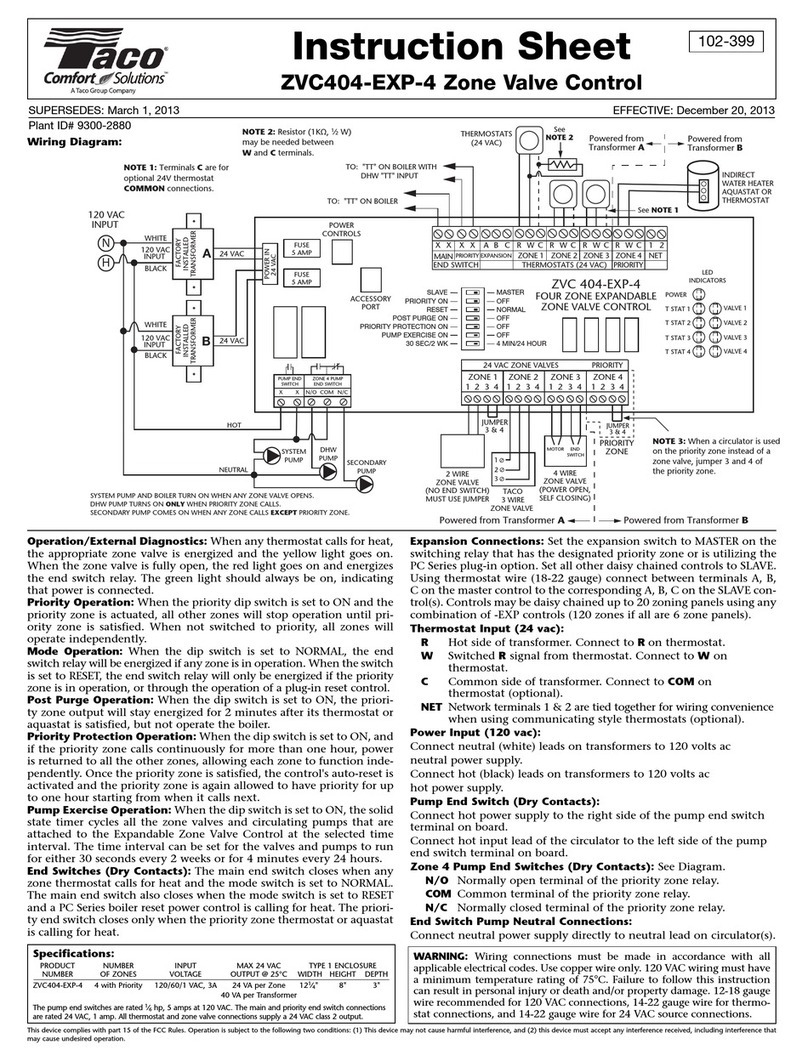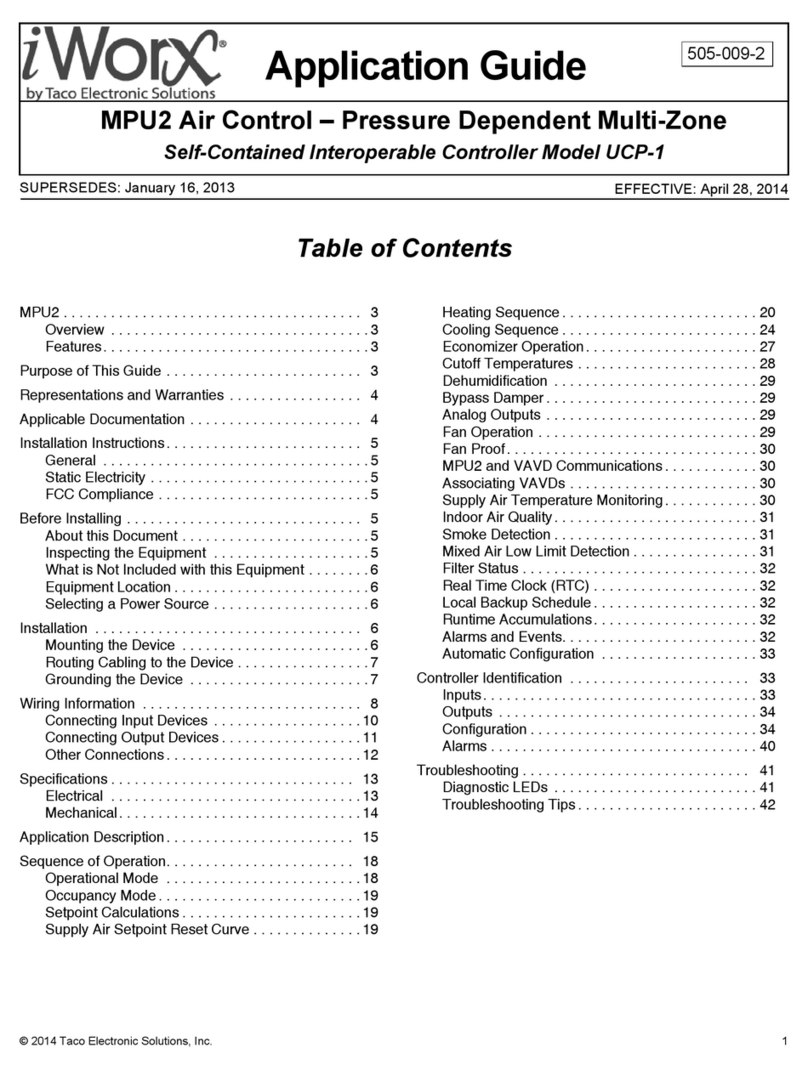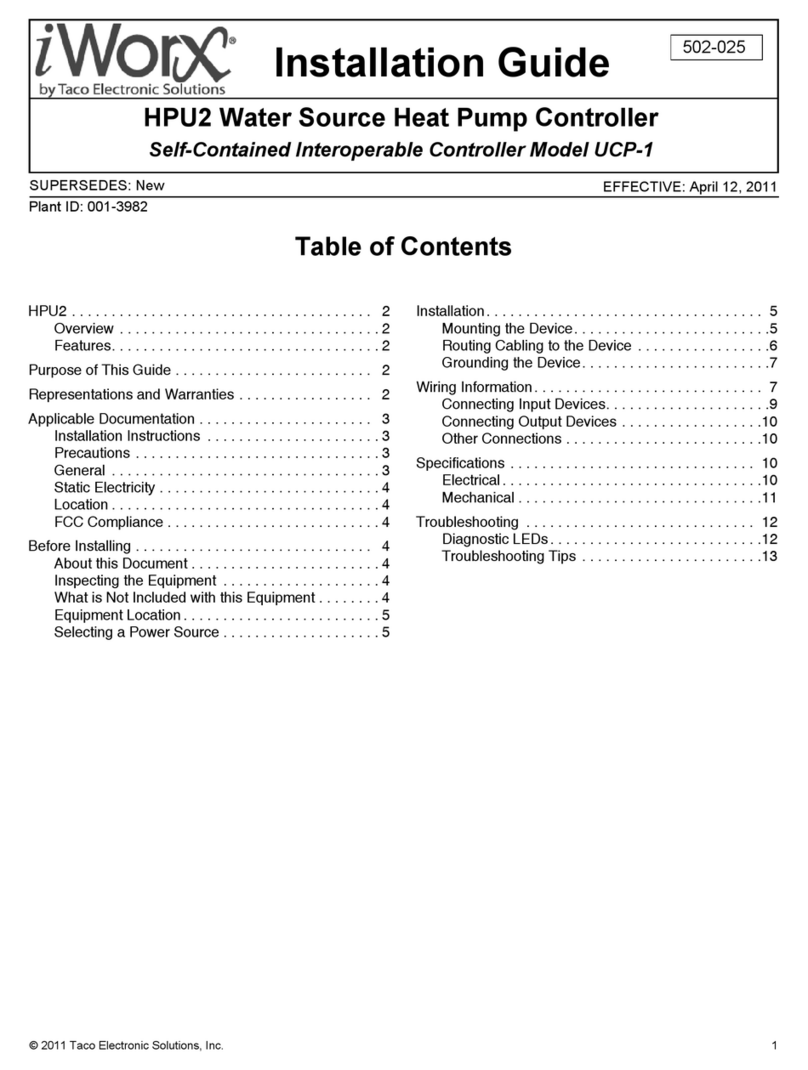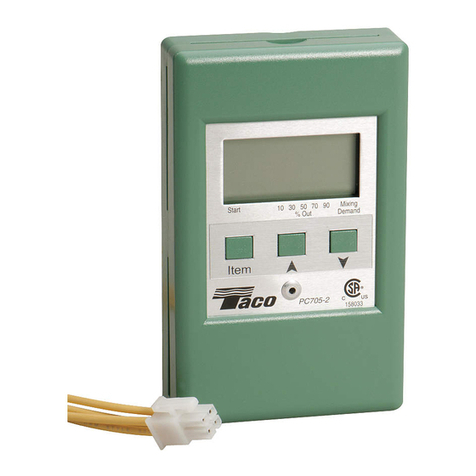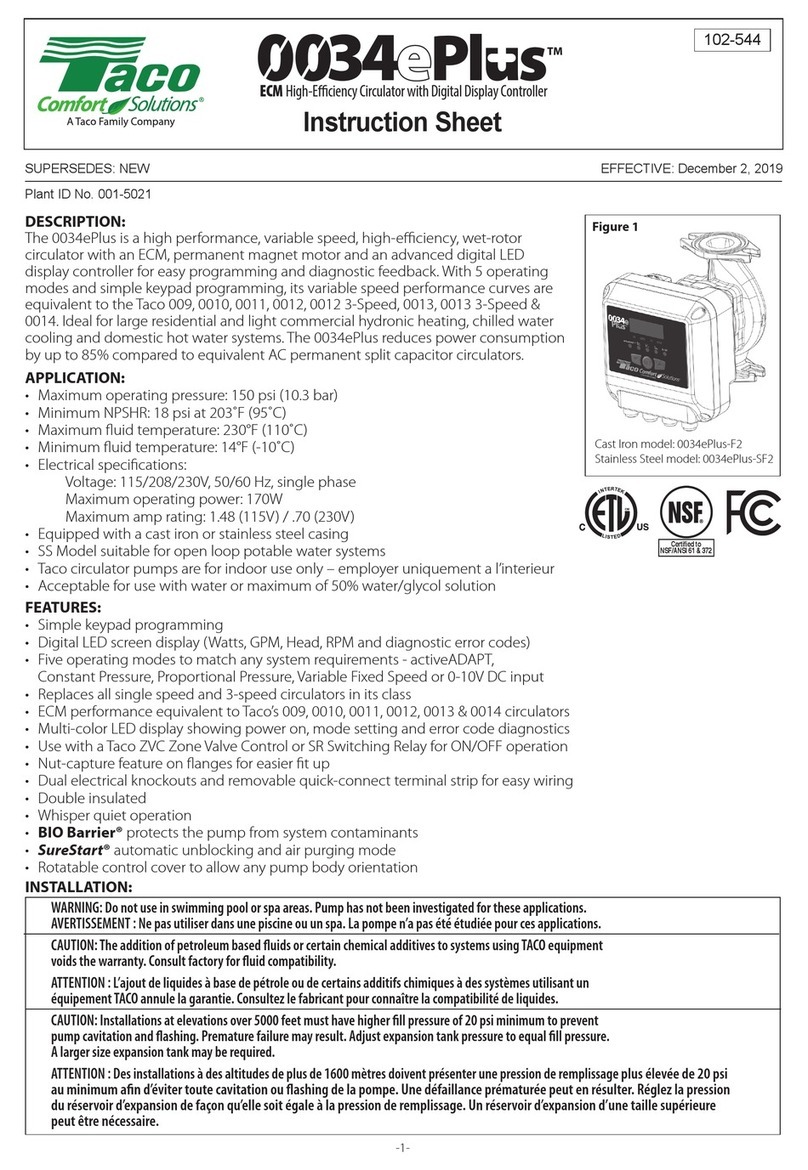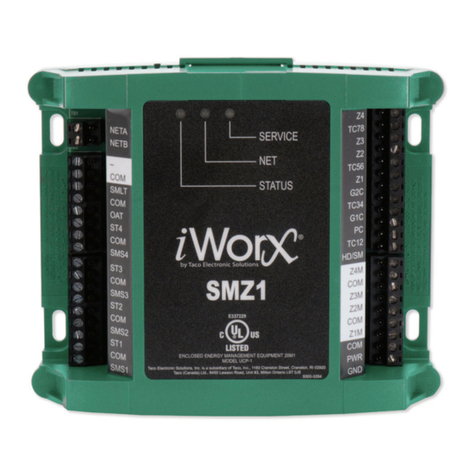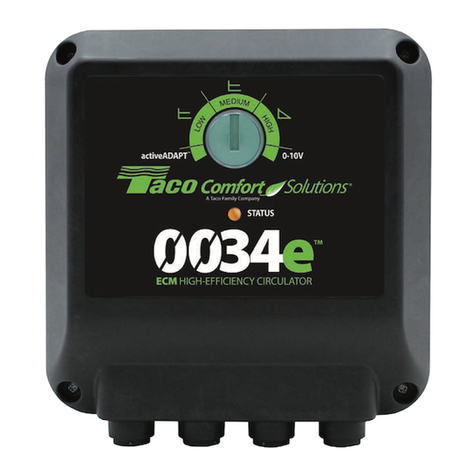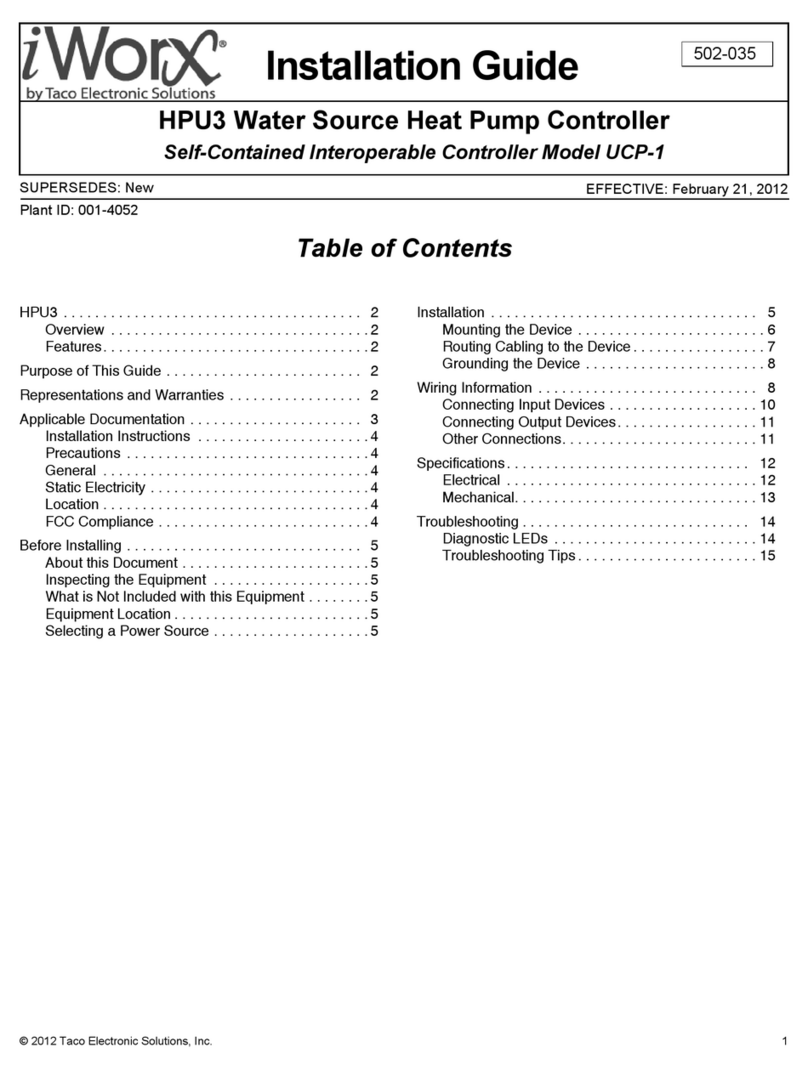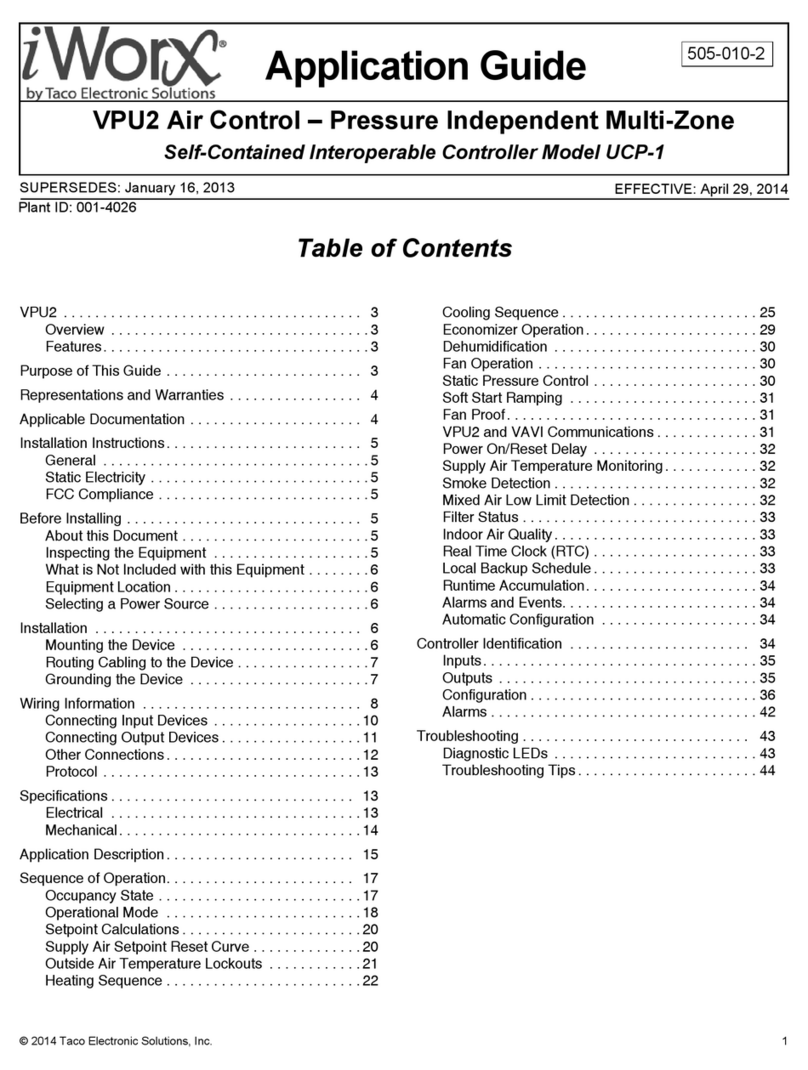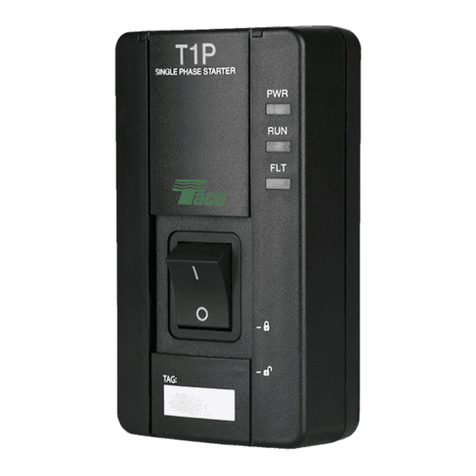
3 of 8
BOILER DEMAND
The PC702-1 obtains a boiler demand through the Taco Zone Control when
a zone calls for heat. When the PC702-1 receives a boiler demand, the
Boiler Demand
pointer is displayed in the LCD.
DHW DEMAND
The PC702-1 obtains a DHW demand when a voltage between 24 and 240
V(ac) is applied across the two DHW demand wires (black wires) that come
out of the back of the control. When the PC702-1 receives a DHW demand,
the
DHW Demand
pointer is displayed in the LCD.
WARM WEATHER SHUT DOWN (WWSD)
When the outdoor temperature rises above the WWSD setting, the PC702-1 displays the WWSD segment in the LCD and turns off the
boiler(s). If the PC702-1 receives a boiler demand from the Taco Zone Control while in a WWSD, the boiler(s) remain off. If the
PC702-1 receives a DHW demand while in a WWSD, the boiler(s) are fired to satisfy the DHW demand.
BOILER OPERATION
The boiler(s) operates around a differential that is either manually set or automatically controlled by the PC702-1. The control includes
a minimum on and off time for the heat source(s), in order to minimize short cycling. The automatic boiler differential increases system
efficiency by adjusting to changing loads.
Boiler Demand
While the PC702-1 has a boiler demand, the system supply water temperature is controlled by turning the boiler(s) on and off. The
PC702-1 calculates the target supply water temperature based on the outdoor temperature, the reset ratio settings, and the boiler
minimum setting.
DHW Demand
While the PC702-1 has a DHW demand, the system supply water temperature is controlled by turning the boiler(s) on and off. The
PC702-1 targets a supply water temperature of at least 180°F (83°C).
Maximum Boiler Supply
The PC702-1 does not allow the boiler target temperature to exceed the boiler design
temperature setting plus 10°F (6°C) to a maximum of 225°F (107°C). When operating at
the maximum, the control displays the MAX segment in the LCD when either that boiler
supply or boiler target temperature are being viewed.
Minimum Boiler Supply
The PC702-1 has a minimum boiler setting which selects a minimum boiler target
temperature in order to prevent corrosion from flue gas condensation. During mild
outdoor conditions, the boiler(s) cycles around the minimum boiler setting. This pro-
grammed function has an OFF setting for condensing and electric boilers. When
operating at the minimum setting, the control displays the MIN segment in the LCD when
either that boiler supply or boiler target temperature are being viewed.
ROTATION
The PC702-1 has an optional boiler rotation function that is selected using the DIP switch located next to terminal 1 in the wiring
chamber. The PC702-1’s boiler rotation function is fixed at 48 hours. The firing order of the boilers changes whenever one stage
accumulates 48 hours more running time than the other stage. After each rotation, the stage with the least running hours is the first to
fire, and the stage with the most running hours is the last to fire. This function ensures that both stages receive equal amounts of use.
When the
Rotation On / Off
DIP switch is set to the
Off
position, Stage 1 is always the first stage to fire.
NOTE: If the boiler used is a lo-hi fire boiler, set the
Rotation On / Off
DIP switch to the
Off
position.
STAGING
The PC702-1 controls up to two stages in order to supply the required target temperature. After the first stage is turned on in the firing
sequence, the control waits a minimum amount of time before turning on the next stage. This minimum amount of time is set using the
interstage delay setting. After the interstage delay has expired, the PC702-1 examines the current supply water temperature to
determine when the next stage is to fire. The control uses Proportional, Integral and Derivative (PID) logic.
Proportional - compares the actual supply temperature to the boiler target temperature. The colder the supply water temperature, the
sooner the next stage is turned on.
Integral - compares the actual supply temperature to the boiler target temperature over a period of time.
Derivative - determines how fast or slow the supply water temperature is changing. If the supply temperature is increasing slowly, the
next stage is turned on sooner. If the supply temperature is increasing quickly, the next stage is turned on later, if at all.
Outdoor air temperature
50
(10)
30
(-1)
10
(-12)
-10
(-23)
70
(21)
90
(32)
WWSD
Temperature
°F
(°C)
Supply water temperature
11 0
(43)
70
(21)
90
(32)
210
(99)
170
(77)
150
(65)
130
(54)
190
(88)
Reset
Ratio
Minimum
Maximum
PC702
Zone 1 Zone 2 Zone 3 Zone 4
POWER
Zone 4Zone 3Zone 2Zone 1
INPUT120 VOLT CIRCULATORS
END
SWITCH
ZR
XX
ZC
Item
®
CUS
158033
OUTDR
°F
VIEW
1 2
Boiler
Demand
DHW
Demand
Interstage
Delay
Start
